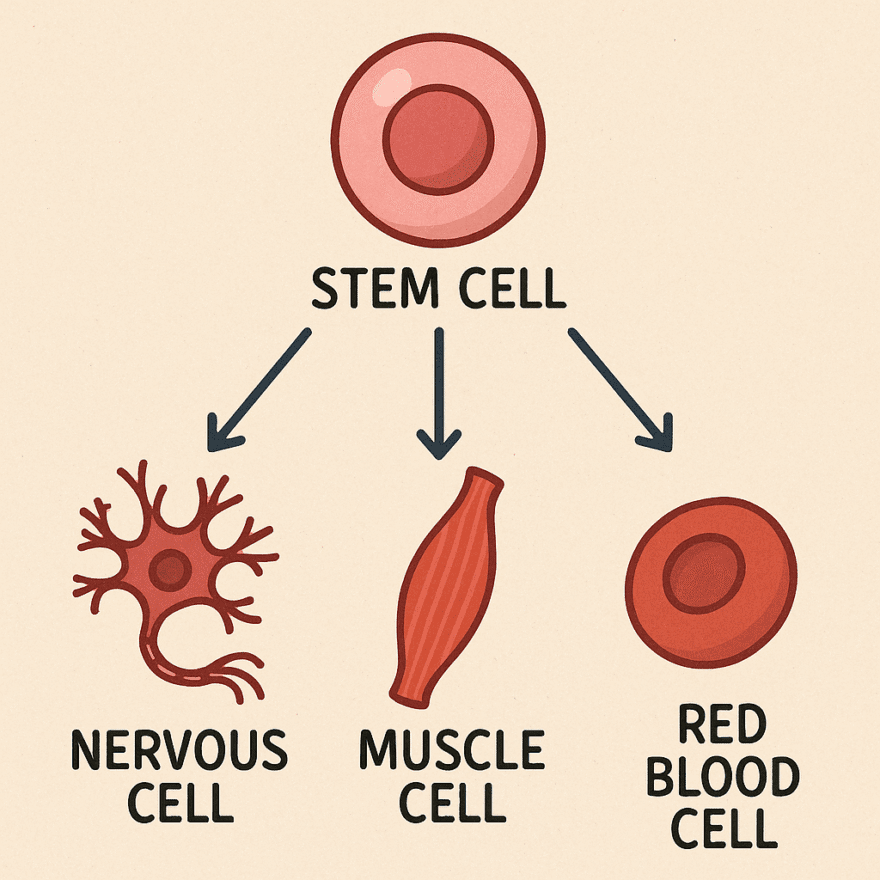Introduction
Stem cells are the body’s raw materials—the unspecialised cells from which all other specialised cells develop.
In regenerative medicine, scientists are exploring ways to use stem cell therapy to repair, replace, and regenerate damaged tissue. While research is still evolving, the potential for supporting longevity and improving health span is significant.
Key Takeaways
- Stem cells can develop into many types of cells, aiding repair and regeneration.
- Therapies may help treat age-related diseases, but most are still experimental.
- Safety, ethics, and regulation are important considerations.
- Lifestyle choices can help protect and maintain your body’s natural stem cell activity.
1. What Are Stem Cells?
Stem cells are unique because they can:
- Self-renew (make copies of themselves)
- Differentiate (become specialised cell types like muscle, nerve, or blood cells)
Types include:
- Embryonic stem cells (pluripotent — can become almost any cell type)
- Adult stem cells (multipotent — found in bone marrow, fat, skin, etc.)
- Induced pluripotent stem cells (iPSCs) (adult cells reprogrammed to behave like embryonic stem cells)
2. Stem Cell Therapy and Longevity
Potential uses being studied include:
- Replacing damaged heart tissue after heart attacks
- Restoring nerve function in neurodegenerative diseases
- Supporting joint and cartilage repair for osteoarthritis
- Accelerating wound healing and recovery after injury
These therapies could help maintain youthful function and reduce disability in later life.
3. Current Limitations
- Most treatments are still in clinical trial phases.
- Some unregulated clinics offer unsafe or unproven therapies.
- Ethical debates surround the use of embryonic stem cells.
4. Protecting Your Natural Stem Cells
Lifestyle strategies may help maintain your body’s stem cell function:
- Regular exercise
- Anti-inflammatory diet
- Quality sleep
- Avoiding smoking and excessive alcohol
- Managing chronic stress
5. The Future of Stem Cell Therapy and Research
Emerging areas include combining stem cell therapy with gene editing, 3D bioprinting tissues, and creating organ replacements—fields that may transform longevity science in the coming decades.
FAQ
Q: Are stem cell therapies available now?
A: Some therapies (like bone marrow transplants) are well established. Others are still in trials or only available through regulated clinical programs.
Q: Are there risks with stem cell therapy?
A: Yes—possible risks include infection, immune rejection, and uncontrolled cell growth. Always use licensed medical providers.
Q: Can lifestyle improve stem cell function?
A: Yes—healthy diet, exercise, sleep, and stress management may support stem cell health.
Internal Links
Related topics: Age Reversal, Human Cellular Regeneration, Epigenetic Regulation
Back to Human Longevity





